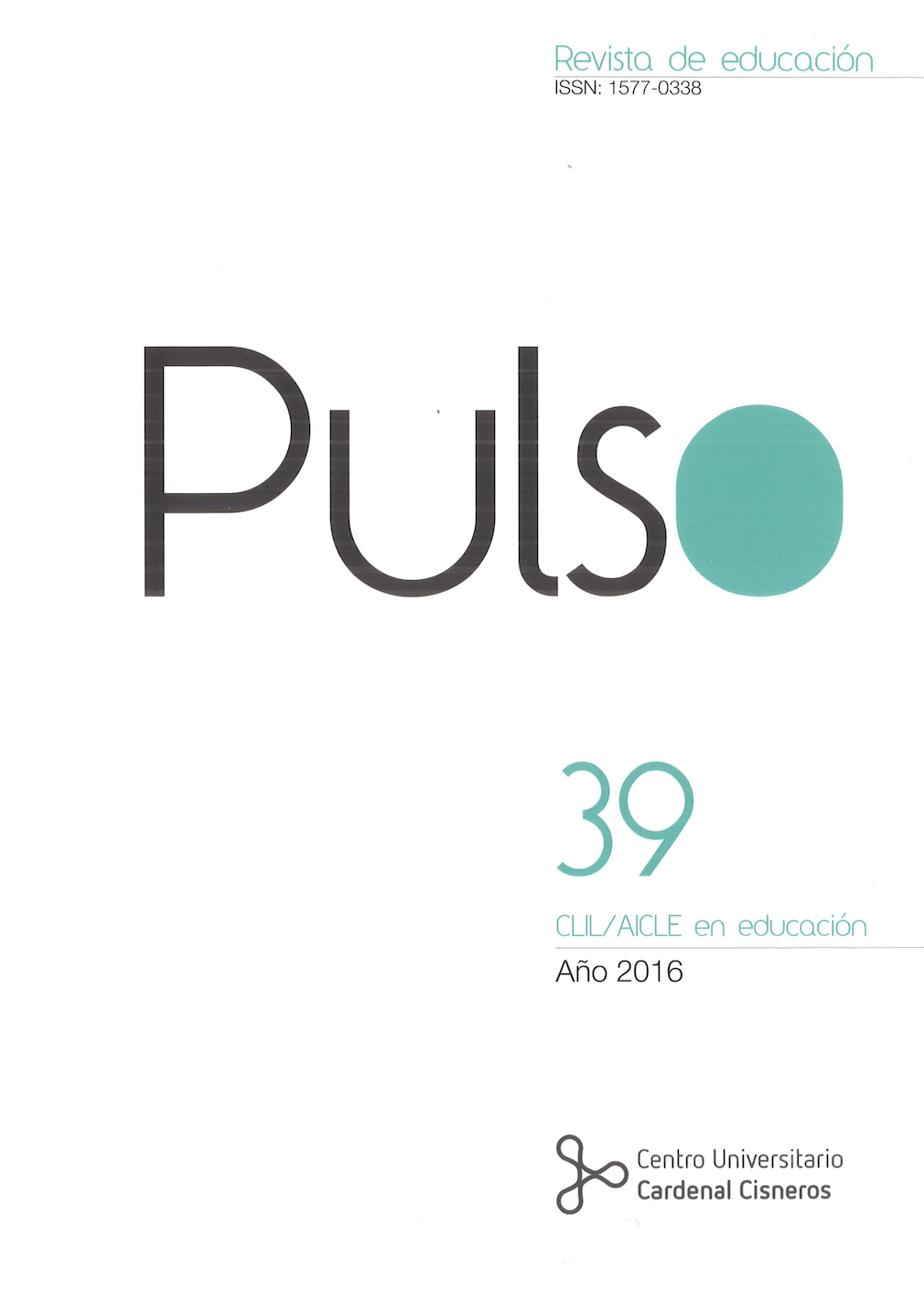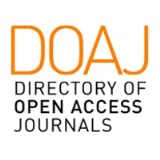Opinions, perceptions and attitudes of a group of students taking a Bilingual Infant Teacher Training Degree: an empirical study
DOI:
https://doi.org/10.58265/pulso.5076Keywords:
CLIL, Research, Higher Education, Teacher TrainingAbstract
The present article focuses on the opinions, perceptions and attitudes of a group of students (N=23) taking the CLIL itinerary on their Infant Teacher Training Degrees. Our main objective was to reflect upon how students are experiencing this specific training based on the ‘loop input’ theory (Woodward, 1986 and 1988), thus making trainees experience what they will later put into practice in their classrooms. Information was gathered using a questionnaire and areas targeted were their perception of second language development, their training in CLIL provision as a teaching tool, and their opinions about the bilingual itinerary, including on an affective level. Results show students do perceive an added value in their studies, are generally capable of identifying CLIL elements in the classroom, and claim to have improved their English communicative competence. This piece of research aims to contribute to assessing and improving the implementation of similar studies on training through CLIL in Higher Education.
Downloads
References
Aguilar, M. and Rodríguez, M. (2011) Lecturer and Student perceptions on CLIL at a Spanish University. International Journal of Bilingual Education and Bilingualism, 15, 2: 183-197.
Ammon, U. and McConnell G. (2002). English as an academic language in Europe: A survey of its use in teaching (Duisburger Arbeiten zur Sprach – un Kulturwissenchaft 48). Bern: Peter Lang.
Coleman, J. A. (2006). English- medium teaching in European Higher Education. Language Teaching, 39,1: 1-14.
Coonan, C.M. (2007). Insider Views of the CLIL Class Through Teacher Self-ObservationIntrospection, The International Journal of Bilingual Education and Bilingualism, 10, 5: 625-646.
Coyle, D. (2010). Foreword. In D. Lasagabaster and Y. Ruiz de Zarobe (Eds.), CLIL in Spain: Implementation, Results and Teacher Training. Newcastle: Cambridge Scholars Publishing, 7-8.
De Graaf, R., Koopman, G.J. Nikina, Y., and Westhoff, G. (2007). An Observation Tool for Effective L2 Pedagogy in Content and Language Integrated Learning (CLIL). International Journal of Bilingual Education and Bilingualism, 10, 5: 503-624.
Dafouz, E. and Núñez, B. (2009). CLIL in higher education: devising a new learning landscape, in Dafouz, E. and M. Guerrini (eds.), CLIL across educational levels. London: Richmond, 101-112.
Dafouz, E. Núñez, B; Sancho, C. and Foran, D. (2007). Integrating CLIL at the teartiary level: teachers’ and students’ reactions, in D. Wolff and D. Marsh (eds.), Diverse contexts-converging goals: CLIL in Europe. Frankfurt am Main: Peter Lang, 91-102.
Dalton- Puffer, C.; Hüttner, J.; Schindelegger, V.; and Smit, U. (2009). Technology-Geeks Speak Out: What Students Think About Vocational CLIL. International CLIL Research Journal, 1, 2: 18-25, available from: http://www.ircj.eu/12/article2.html
Fernández, R. and Johnson, M. (Coords.). (2016). Enseñanza bilingüe en la educación universitaria. El enfoque CLIC del Centro Universitario Cardenal Cisneros. Alcalá de Henares: Centro Universitario Cardenal Cisneros.
Fernández Fontecha, A. (2009). Spanish CLIL: Research and Official Actions. In Ruiz de Zarobe, Y. and Jiménez Catalán, R. M. (Eds.), Content and Language Integrated Learning: Evidence from Research in Europe. Clevedon: Multilingual Matters, 3-21.
Krashen, Stephen D. (1981). Principles and Practice in Second Language Acquisition. English Language Teaching series. London: Prentice-Hall International.
Lasagabaster, D. and Sierra, J.M. (2010). Immersion and CLIL in English: more differences than similarities. ELT Journal, 64, 4: 367-374.
Martin de Lama, M. T. (2015). Making the match between content and foreign language: A case study on University students’ opinions towards CLIL Higher Learning Research.
Mehisto, P. (2008). CLIL Counterweights: Recognising and Decreasing Disjuncture in CLIL. International CLIL Research Journal, 1, 1 available from: http://www.icrj.eu/11-75.
Papaja, K. (2012). The impact of students’ attitude on CLIL: A study conducted in higher education. Latin American Journal of Content and Language Integrated Learning, 5, 2, 28-56.
Ramos García, A.M. (2012). Higher Education Bilingual Programmes in Spain. Porta Linguarum, 19: 101-111, available from: http://www.ugr.es/~portalin/articulos/PL_numero19/7%20A%20M%20Ramos.pdf.
Thijssen, W. and Ubaghs, L. (2011). Teacher’s and students’ perceptions of the effects of content and language integrated learning (CLIL) chemistry education: A case study at a secondary school in the Netherlands, Available from: http://alexandria.tue.nl/extra2/ afstversl/esoe/716591.pdf.
Woodward, T. (1986). Loop Input-a process idea. The Teacher Trainer 1: 6-7.
Woodward, T. (1988). Loop Input. Canterbury: Pilgrims.
Woodward, T. (1991). Models and metaphors in language teacher training. Cambridge: Cambridge University Press.
Yang, W. and Goslin, M. (2013). National Appraisal and Stakeholder Perceptions of a Tertiary CLIL Programme in Taiwan. International CLIL Research Journal, 2/1: 67-81.
Downloads
Published
How to Cite
Issue
Section
License
Copyright (c) 2022 Pulso. Revista de educación

This work is licensed under a Creative Commons Attribution-NonCommercial-NoDerivatives 3.0 Unported License.
This journal offers immediate open access to its content based on the idea that offering readers free access to research favours a global exchange of knowledge.
Papers are published in the electronic version of the journal under a Creative Commons License: Attribution-NonCommercial-No derivatives 4.0 International
Authors are allowed and encouraged to promote the post-print version (reviewed and accepted for publication version) of their work online before publishing them. This favours their earlier circulation and dissemination and thus a possible increase in their citation and reach among the academic community.














